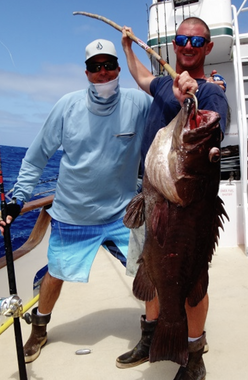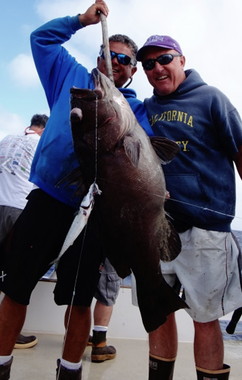Grouper

Broomtail grouper can be distinguished from other eastern Pacific grouper by the exserted ray on the tail, giving the fish its namesake broomtail appearance. Broomtail have a broad distribution stretch from southern California south to Peru. Juveniles may be found inshore around mangrove estuaries, while adults are typically found offshore to depths of 60 meters. They are savage ambush predators that must be quickly turned once hooked before they can retreat into structure.
|
Gag Grouper are the most common grouper on rocky ledges in the eastern Gulf of Mexico. Juvenile gags reside in estuaries and seagrass beds while adults are usually found offshore on hard substrate in water 60 – 250 feet deep (rarely to 152 m) and occasionally inshore on rocky or grassy bottom. Adults are either solitary or found in groups of 5 to 50 individuals.
The coloration is extremely variable but generally brownish gray overall with a pattern of dark, worm-like or kiss-shaped markings along the sides. Gags can be distinguished from black grouper, Mycteroperca bonaci, that often occur in the same habitat by the distinctive color pattern and the shape of the preopercle. The gag has a noticeably notched preopercle (the middle bone of the gill cover) with a distinct lobed appearance while black grouper have an evenly rounded preopercle with no definite lobe below. |
Bottom fishing is the most effective method of catching gag. Anglers commonly use depth recorders to locate rocky outcrops and irregular bottom where gags congregate, anchoring when a likely area is located. Wrecks and oil rigs in shallow shelf waters of the Gulf also attract many gags. They are an excellent light-tackle target for those fishing relatively shallow waters and the white flaky flesh of gags makes it excellent eating.





